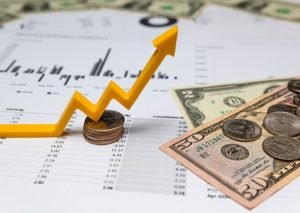There are quite a lot of unknowns to think about, such as your desired retirement age, your financial commitments, and your preferred lifestyle. It might be enticing to make a general retirement plan and call it a day, considering those factors. That being said, you should evaluate your retirement plan annually to make sure you stay on course.
Why Annual Reassessment Matters

The older you get, the more you should be careful about organizing your finances. You move from making growth-oriented investments to putting liquidity first as you go from your first job to retirement. Could significant life events influence your financial plan? It may seem hard or even intimidating to manage your money decades ahead, but you are far more adept than you give yourself credit for.
Understand and Adjust Your Risk Tolerance
Every kind of investment has some level of risk. A more cautious method provides for fewer hazards with beneficial results, while a more aggressive strategy exposes you to larger risks with larger profits. Your financial advisor can assist you in identifying your investment style. Since you have an extended period to recover any losses when the market recovers, you can usually choose to advise on greater risks the longer you have to save.
Your level of risk tolerance will fluctuate as you get older. For instance, you have 40 years of labor ahead of you to save, invest, and make money, so you can afford to be ambitious when you take your first employment opportunity out of college. Low-risk investments, however, are essential as you approach retirement since they better safeguard your savings. Even though your earnings will be less, they will still be dependable and carry a lower chance of loss.
Stay Realistic About Investment Allocation
Reassessing your financial strategy enables you to take a step back and be realistic, regardless of where you are in your career—beginning, midway through, or retirement. At every stage of your life, invest only the funds you can afford to lose, not amounts that could leave you in financial ruin. As long as it works for your life, your tolerance will increase with the amount of money you are at ease losing. To find out which allocation kinds have risks you can afford, inquire with your financial counselor. For instance, money market accounts and bonds issued by governments are ideal low-risk choices, but real estate, high-income bonds, and equity mutual funds carry a slightly higher risk.
Update Insurance as Life Changes
You might need to modify your insurance coverage when your life changes, such as when you get married, start a family, or purchase a home. This covers house, health, life, and disability insurance. You could have to boost coverage for additional medical requirements or move to a plan that includes dependents, in case you have a family. Make sure you have adequate insurance to safeguard your loved ones in the event of your passing if you have a family. Further, particularly if you are the major income earner, examine your disability coverage. Making changes to your insurance helps shield you and those around you from monetary dangers.

Proactively Manage Debt and Emergency Funds
You must take the initiative. Pay off your college loans and credit card debt as soon as possible to avoid excessive interest. Employ the debt avalanche technique, which gives priority to high-interest debts. To reduce the total amount owing, pay down the principal each time you schedule your payments.
Setting up an emergency fund as soon as feasible is another wise monetary planning recommendation. You’ll be ready for any unexpected turn in life if you do this. You will keep your long-term financial goals intact even if unexpected medical expenses hit you, your car breaks down, or you become unwell and miss a few days of work.
Adjust Plans with Each Life Stage
Your financial choices will alter dramatically as you get older. You can begin your adult life in your 20s with debt that will take years to pay off. Invest at least 7% of your 20s income into your 401(k) or, if you work for yourself or as a freelancer, into the solo 401(k) to get ready for this.
You could begin making major life expenditures in your 30s, such as furniture, vehicles, homes, and trips, in addition to accruing more student loan debt from your master’s degree program. Furthermore, you may be married, which has an impact on your retirement plan obligations and taxes.
Following that significant life event, you could begin thinking about having children and will need to budget for expenditures such as childcare, housing, extracurricular activities, and college. By the age of forty, you may be heavily indebted and trapped with spending and budgeting practices from decades past.
One of the biggest investments you will ever make is a home, for which you are financially liable for utilities, home insurance, property taxes, and maintenance. You can be required to pay alimony or spousal support once a month if your income exceeds that of your ex-spouse.
Your financial planning efforts, responsibilities, normal spending, and saving capacity will evolve as you go from your early career to retirement. Your 50s could be your final realistic opportunity to pay off debt and invest for retirement. However, things might change when you change careers. For example, you can lose employer-sponsored medical coverage and employer-matched pension contributions.
Prepare for Retirement and Fixed Income Living

You should concentrate on estate planning and healthcare expense management in your 60s when you switch to a fixed income and draw from your savings. Although you can begin receiving benefits at age 62, delaying will result in a permanent boost in the average monthly benefit amount.
Prioritize your financial demands as you mature and come closer to retirement. Annuities, which offer an assured cash flow for a specified amount of time, usually the remainder of your life, are an ideal way to be sure that you will be content on a fixed income.
Your tolerance for risk increases with age. Concentrate on growth and aggressive strategies, like equities and ETFs, when you are in your 20s and 30s. Reduce your exposure to high-risk investments and adopt a more balanced strategy throughout your 40s and 50s.
Consider increasing your fixed-income assets, such as bonds, as you get closer to retirement to protect your savings. To make sure your investments are serving your needs, your portfolio should take into account your age, objectives, time frame, and risk tolerance.




